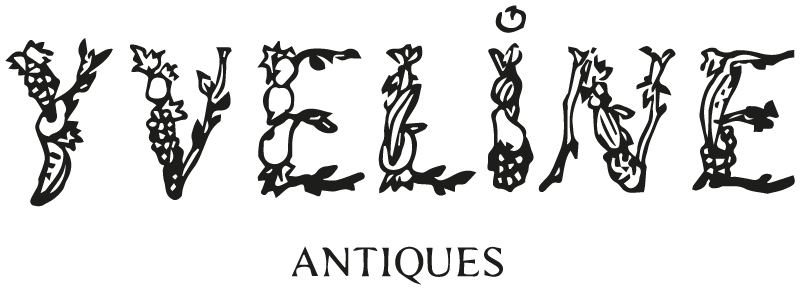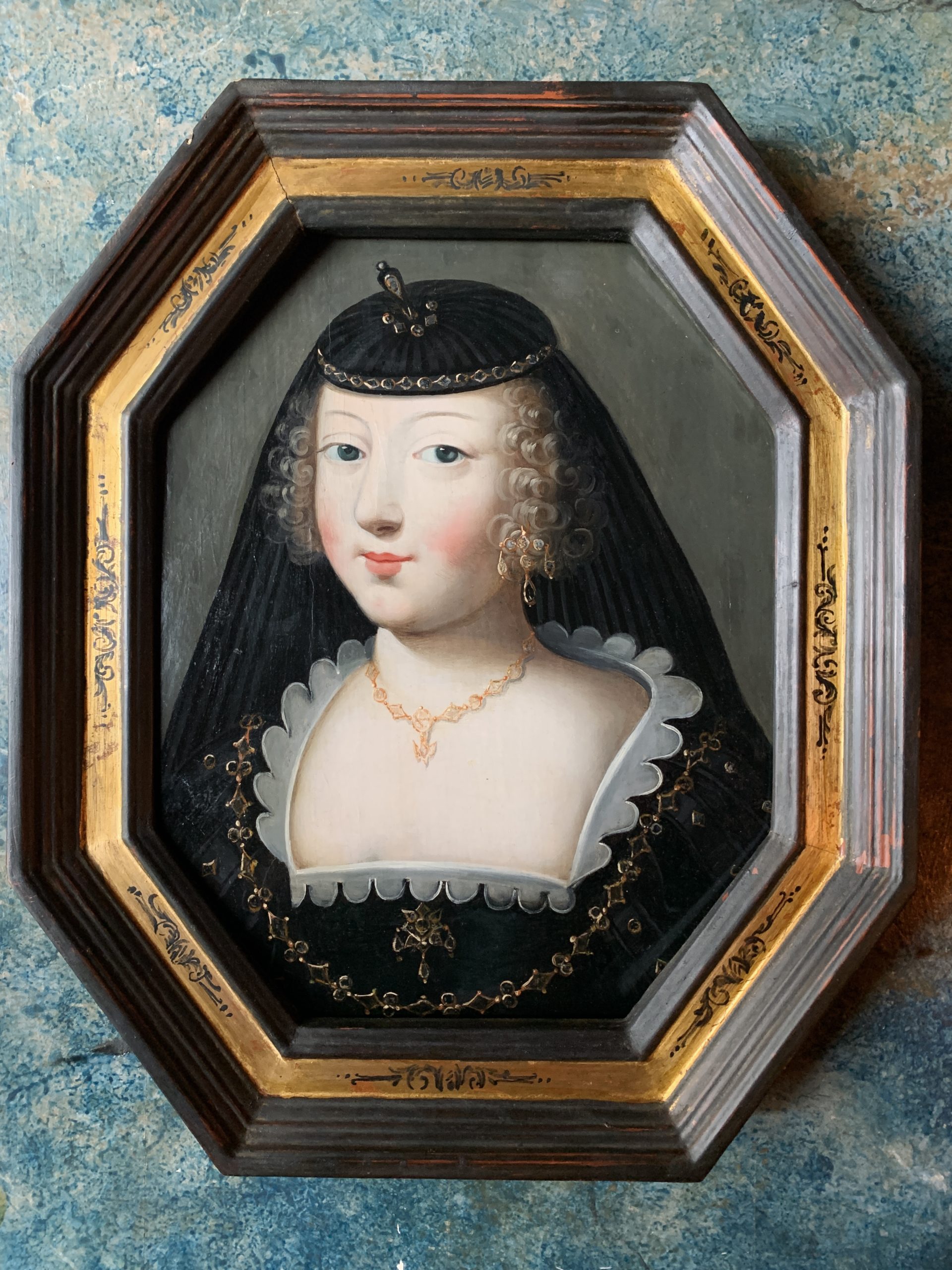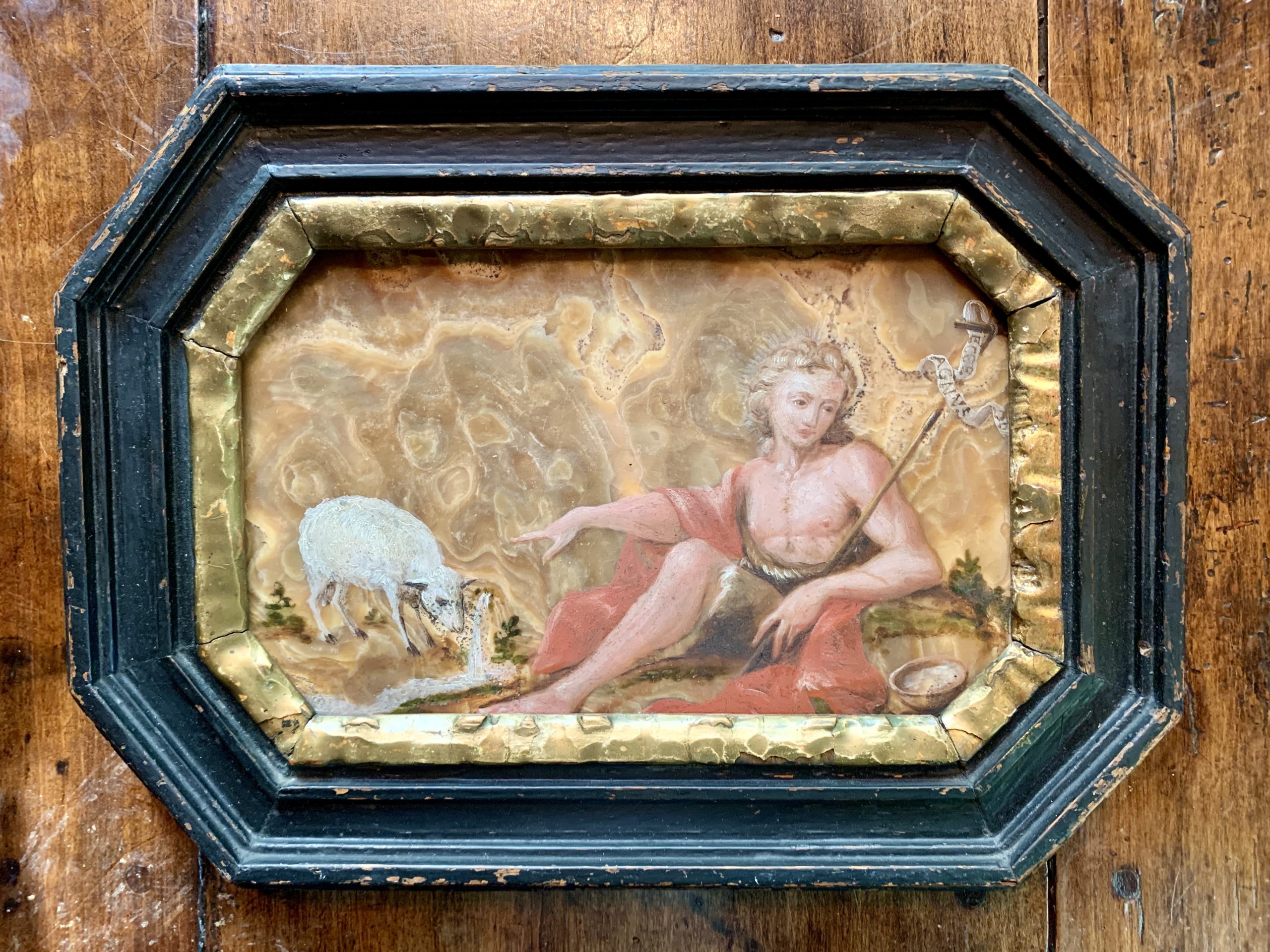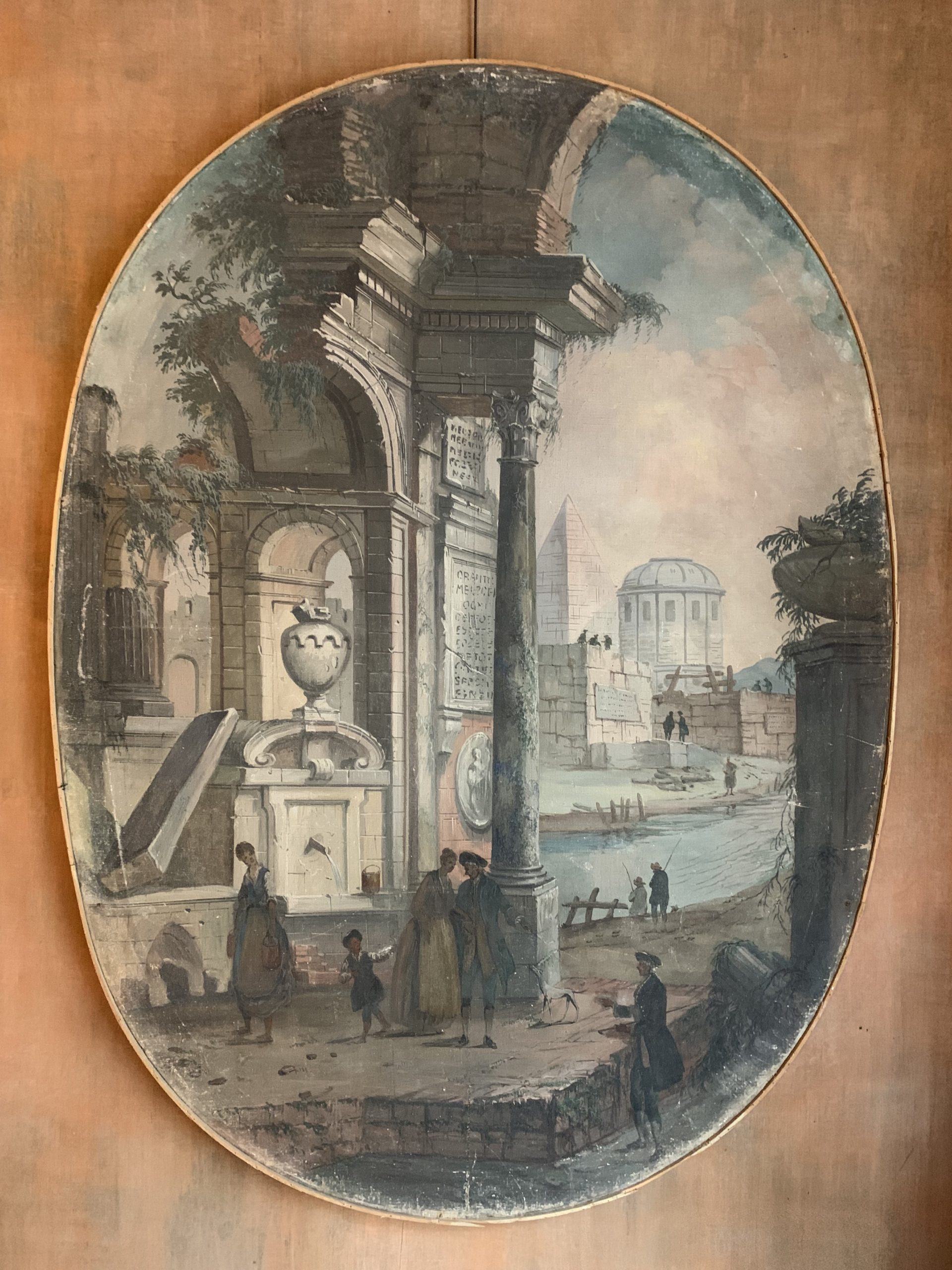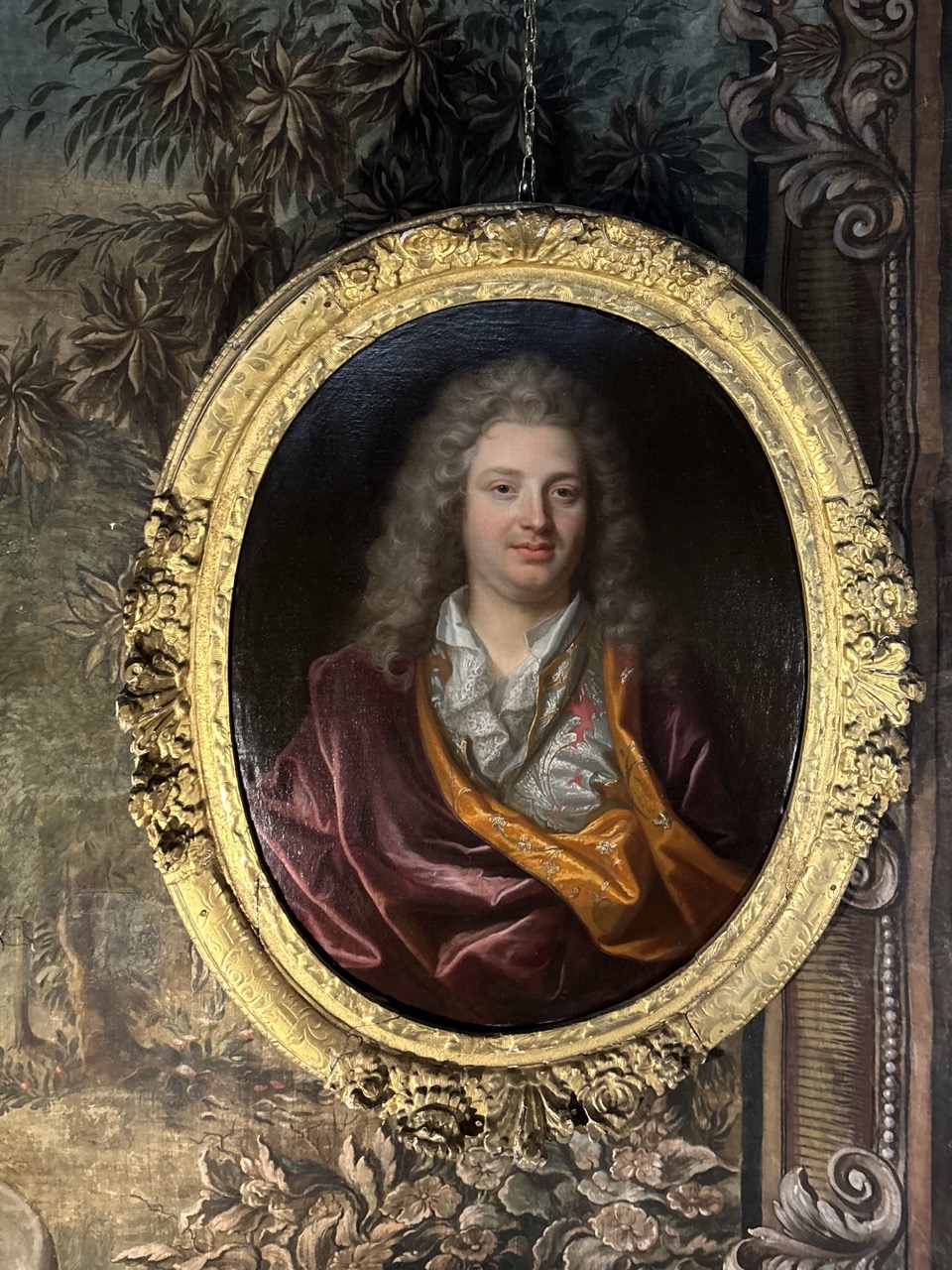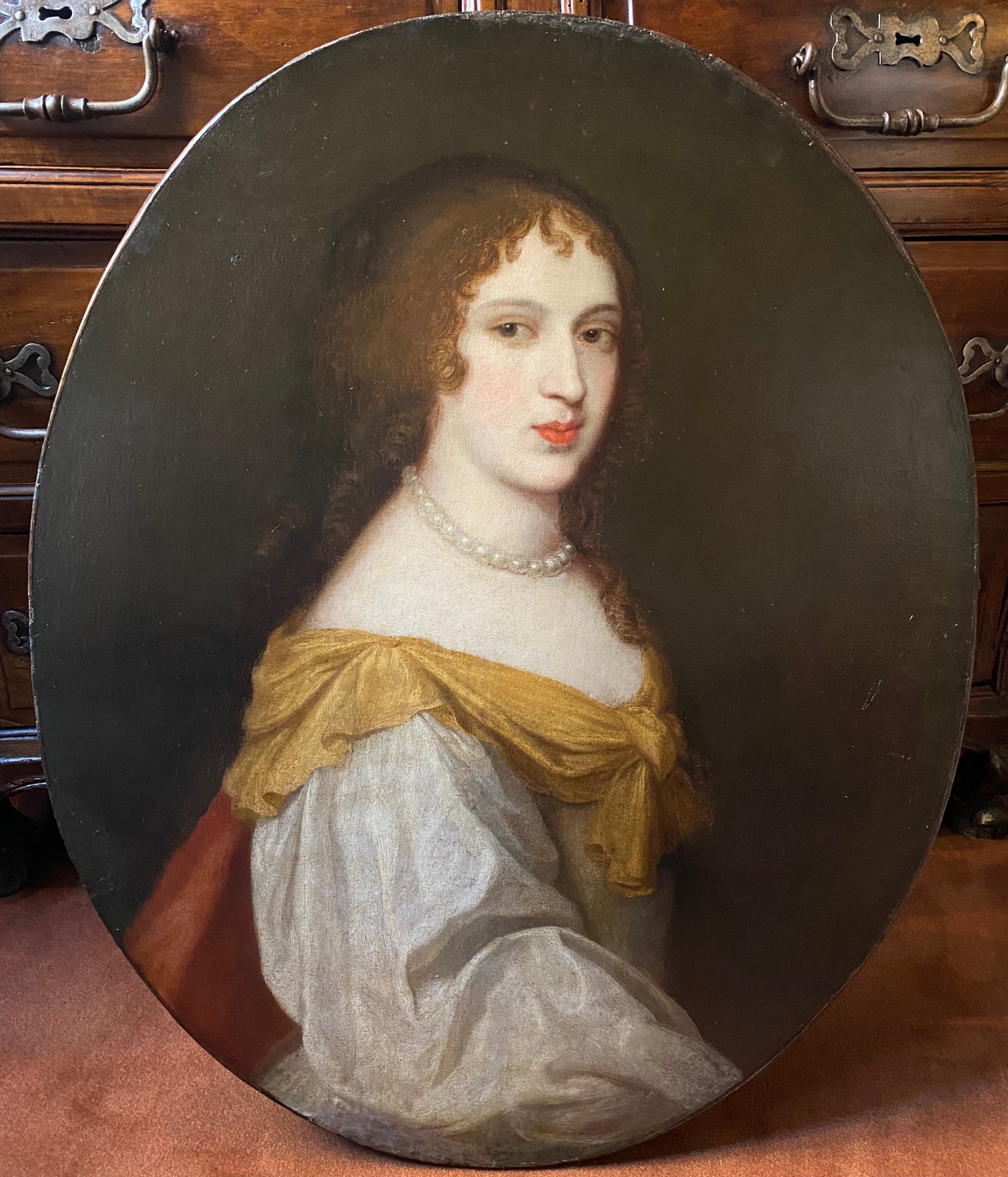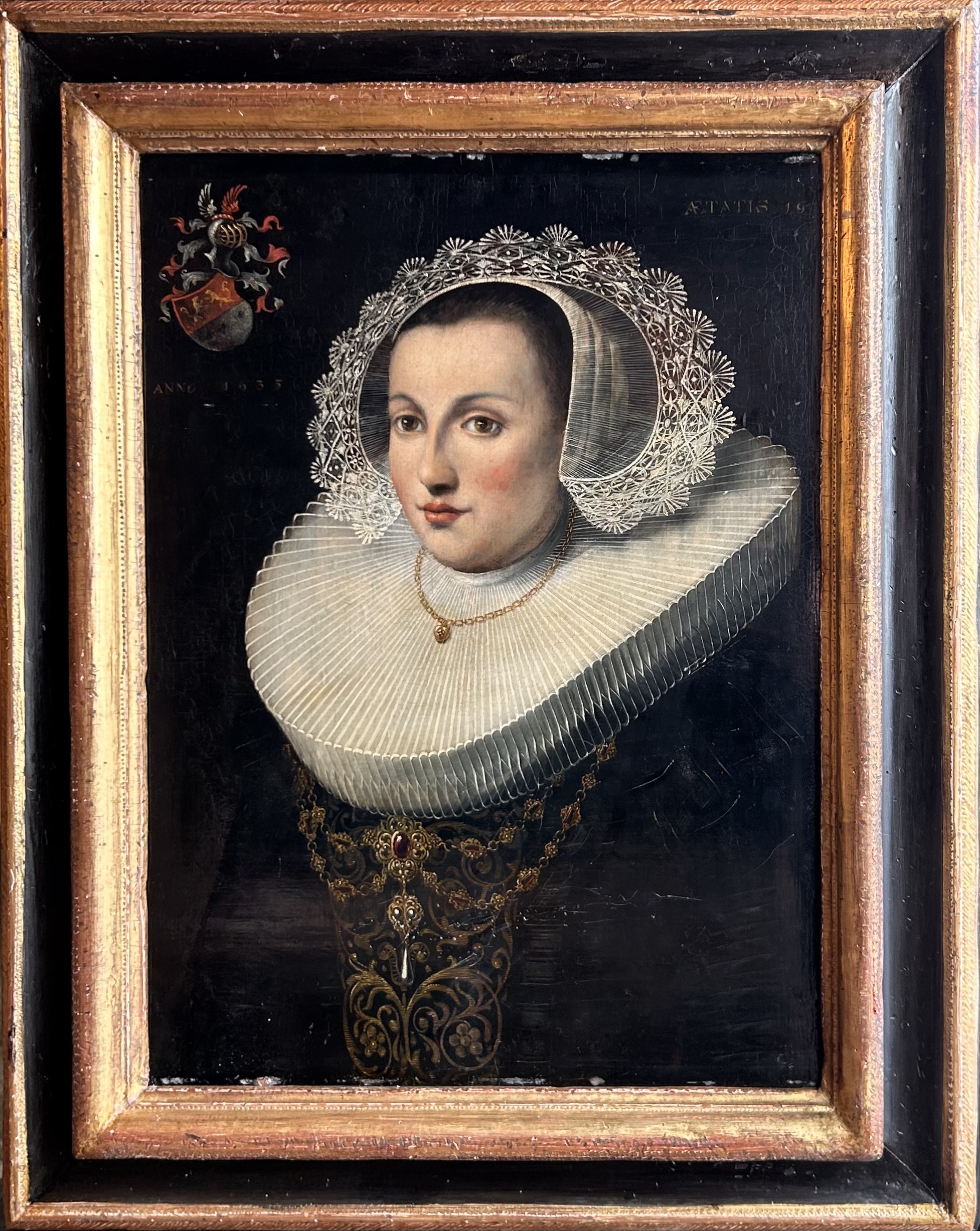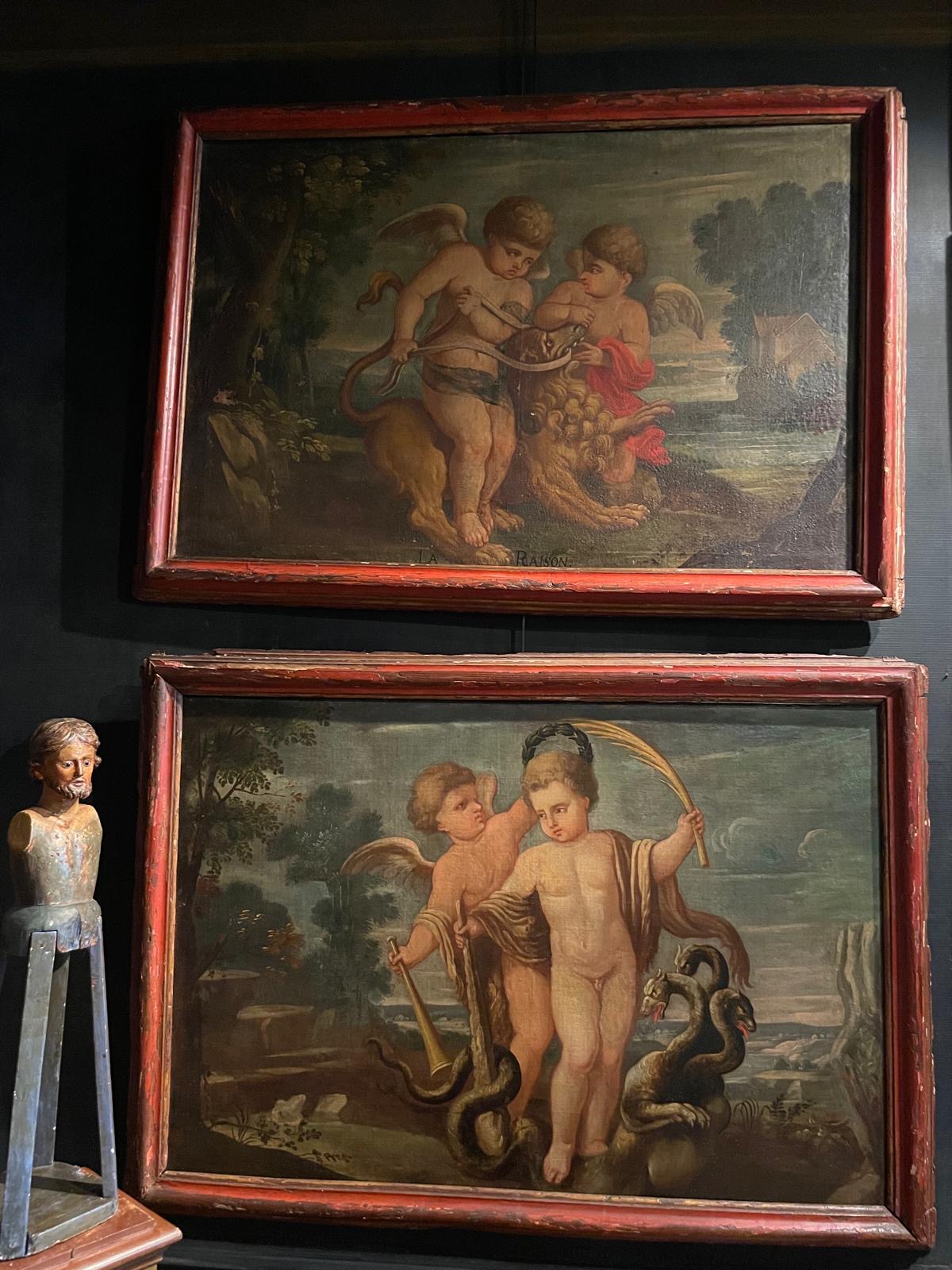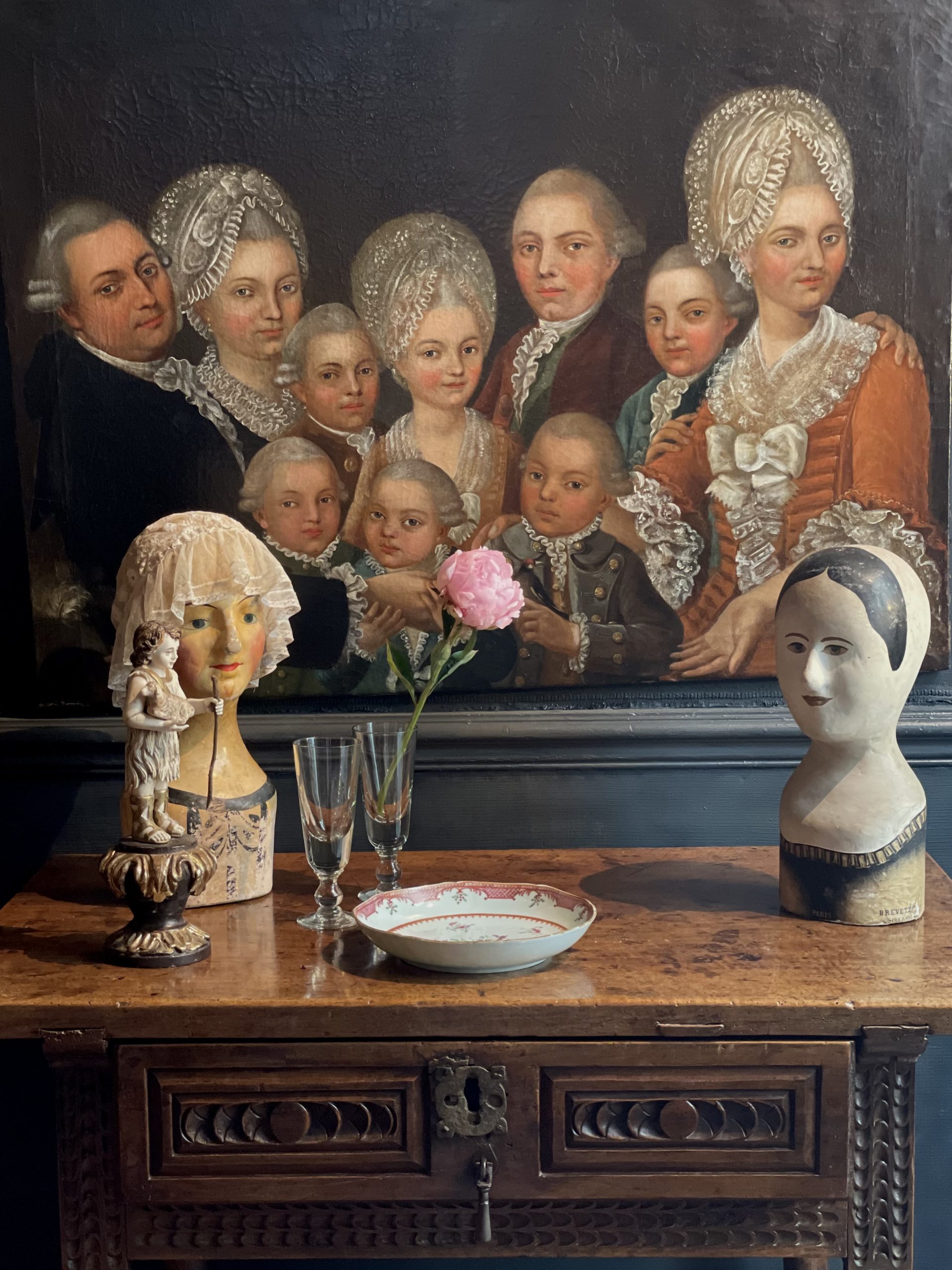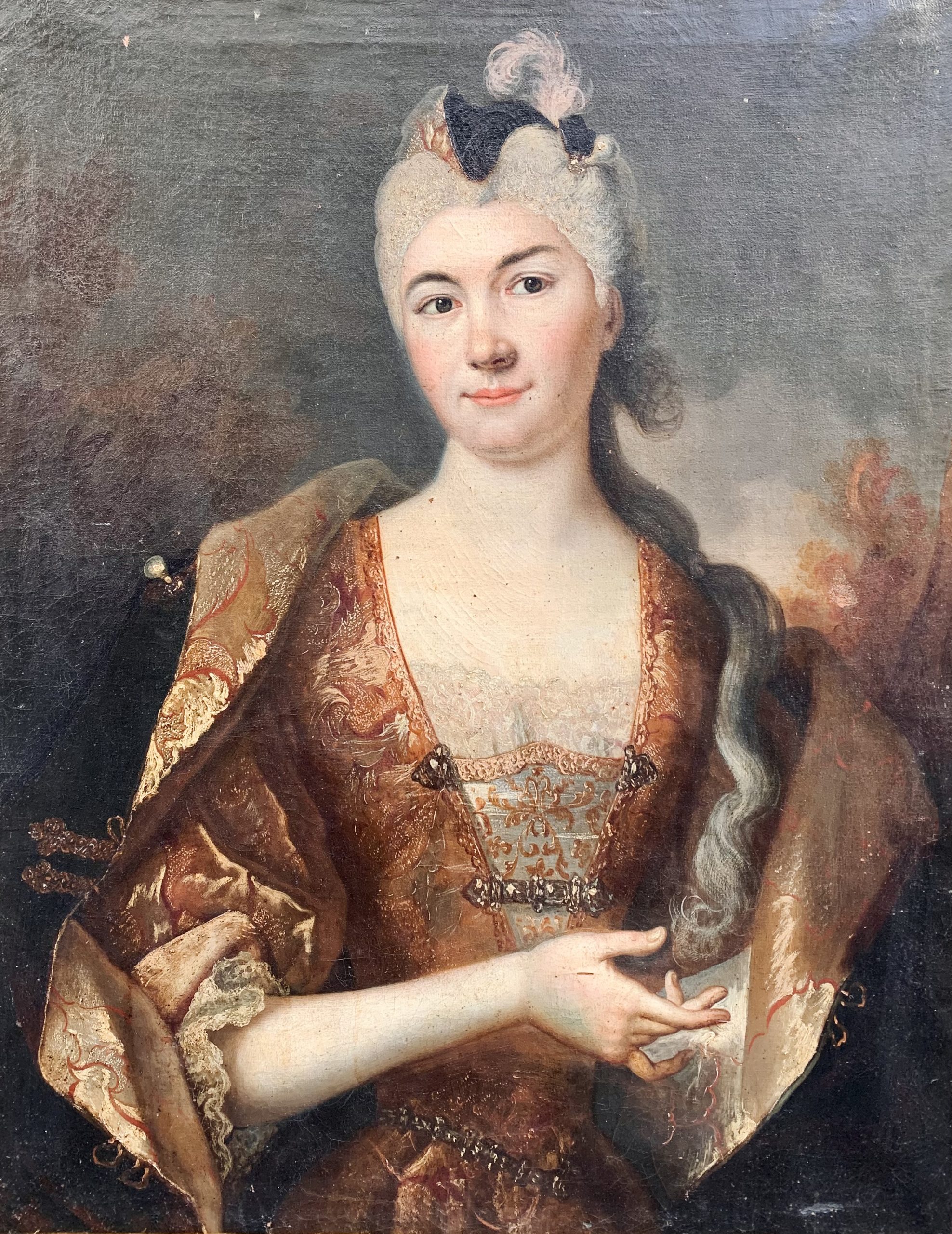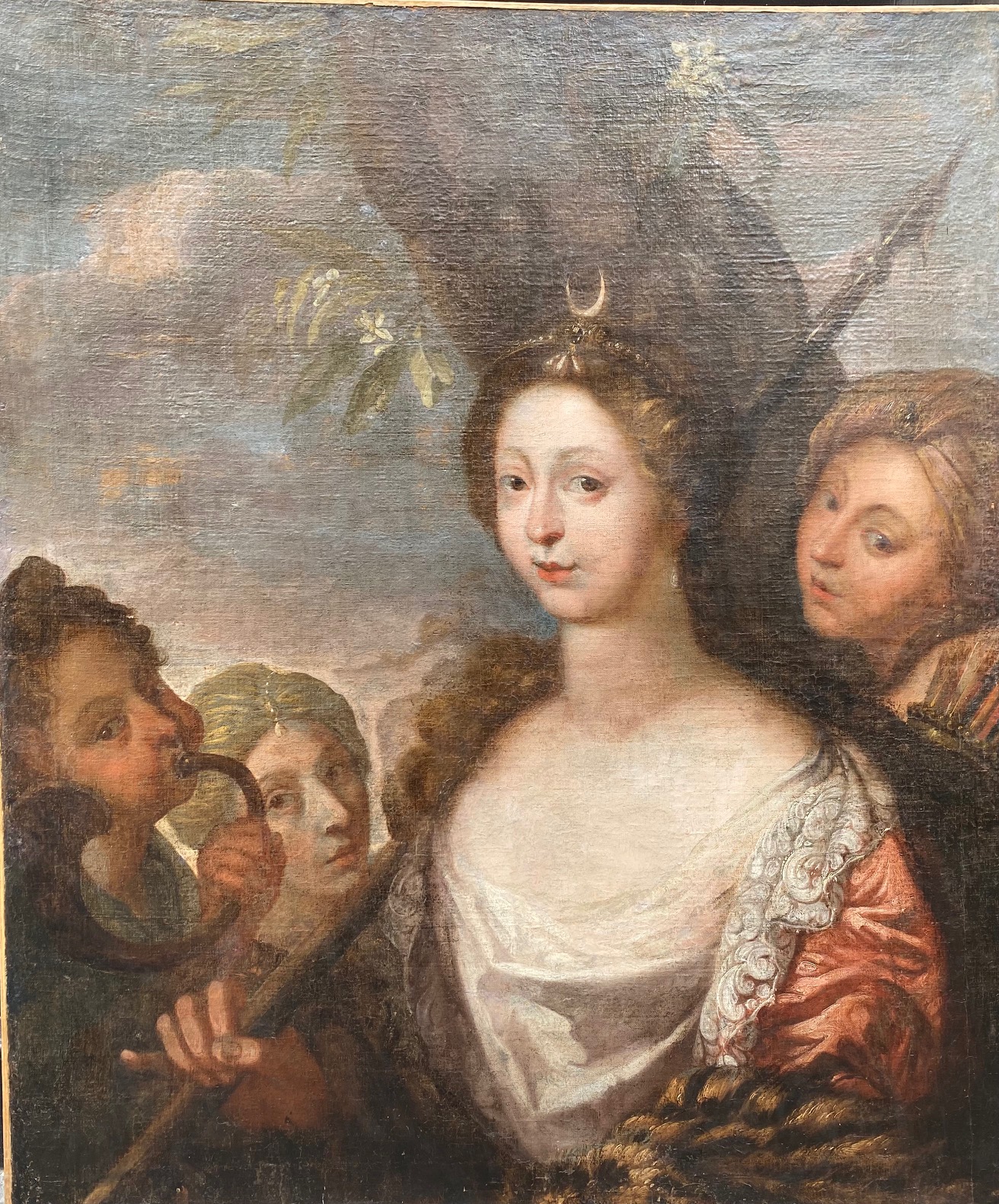Portrait of Princess Anne-Géneviève de Bourbon, Duchess of Longueville (1619-1679), daughter of the Prince of Condé and Charlotte de Montmorency. Oil on octagonal panel by Jean Ducayer, painted after a work by François Clouet.
Around 1640
Painting on alabaster depicting Saint John the Baptist pointing with one hand towards a lamb and holding in another hand the pastoral staff in the shape of a cross with an inscription ‘Ecce agnus Dei’ – ‘Behold the Lamb of God’, wooden frame polychrome sculpted.
19th century
France
Large oil on canvas representing a landscape with Roman ruins and characters.
18th century
Italy
The banyan, inspired by oriental dressing gowns, was worn for its comfort and casual elegance.
The subject’s richly decorated orange silk scarf and silver-embroidered vest illustrate this fashion well. This style reflects the influence of cultural and commercial exchanges with the Orient, as well as the importance given to appearance and social status in the society of the time.
Oil on canvas portrait of a quality lady with hairstyle “à la garcette”.
17th century
Italy
“Portrait of a young woman”, oil on panel, inscription in Latin «aetatis 19»: at the age of 19, dated 1635, patinated wooden sculpted frame.
Dutch school
17th century
Set of five painted canvases representing allegories of Love, Justice, Reason, Fidelity and Glory, original polychrome carved wooden frames.
Italy
Early 18th century
Oil on canvas “Family portrait”, 10 faces and as many stories to invent and reinvent.
XVIII century
Austria
On her head, she wears a tricorn, a hat with three raised brims, emblematic of the 18th century, particularly prized by the Austrian aristocracy. Adorned with feathers and pearls, this tricorn, often masculine in representations of the time, is here transformed into a feminine accessory, emphasizing the status and sophisticated taste of the lady. This mixture of influences, masculine and feminine, was then a symbol of the avant-garde fashion of the European courts.
Oil on canvas depicting Diane and her suite.
Diana is originally a Latin goddess with power over procreation, childbirth, hunting and sovereignty. She quickly became the goddess of hunting and moon in Roman mythology.
Italy
XVII century
